This is part three of our Kumano Kodo hike. Read parts one and two.
Kii Kaatsura
Kii-Kaatsura is a port town on the Kii Peninsula. A steep rocky ridge juts out into the sea creating a large, well-protected harbour with a narrow entrance. Kii-Kaatsura’s harbour hosts a big tuna-fishing fleet, and each morning there is a tuna auction on the wharf. This tuna auction is said to be the biggest in Japan.
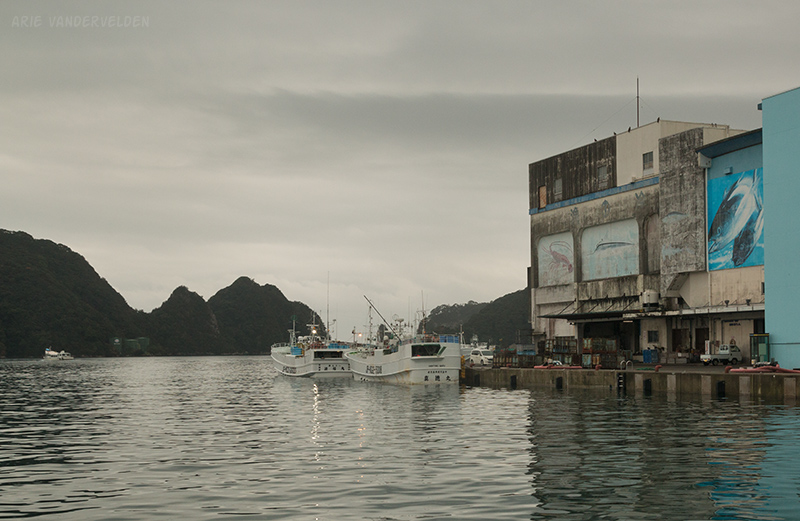
When people think of visiting a tuna auction in Japan, they’ll think of the Tsukiji auction in Tokyo. Attending the Tsukiji auction means having to take a very expensive taxi to Tsukiji at 5 am (subway is not running yet), and then lining up, hoping that you qualify for the limited number of spectator spots at the auction.
In Kii Katsuura we simply got up at 6:30 am, walked two blocks, and found the upper gallery to view the auction. There were some other spectators including a group of schoolkids, but we were the only westerners present that day.
Hundreds of tuna were laid out on the auction floor. I spotted yellowfin tuna, and I think some of the others were albacore. There were no bluefin tuna; in December these are not in season.
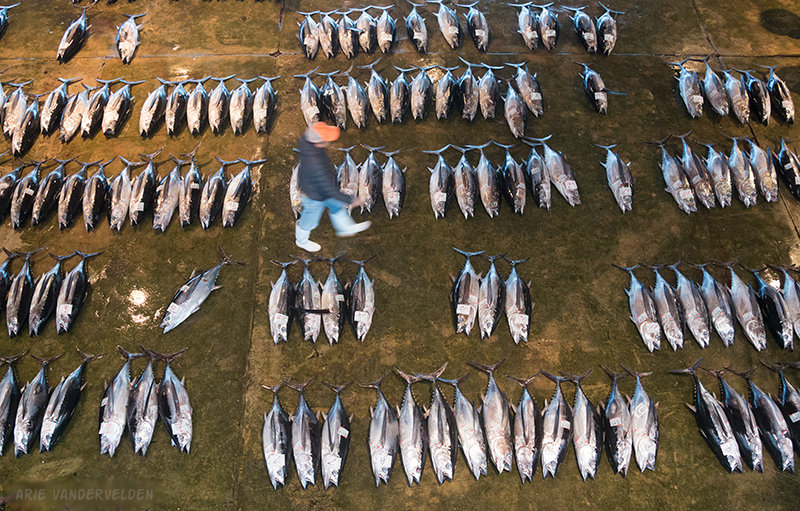
The auction began at 7 am sharp. I had no information to tell me how the auction worked, so Diana and I were trying to figure it out as the auction went on. The auctioneers wore blue caps, the buyers wore green caps, and there were men with red-and-white caps and notepads who were writing things down. The tuna had their tails cut off, and buyers were grading the tuna meat by looking and poking at the tails.
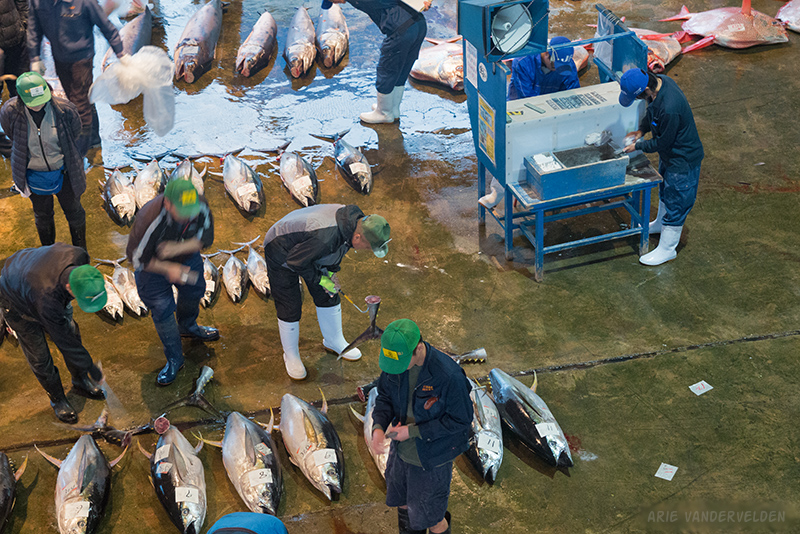
Things were being written on pieces of slate, and the slates were then brought to the auctioneers cart (the blue cart with the bullhorn in the above picture). Every so often a short announcement was made by the auctioneer. The auction was unlike North American auctions where the auctioneer repeats an asking price and where buyers place bids by thrusting their hands in the air.

The announcements by the auctioneers seemed to indicate the winning bids. Successful buyers then slapped stickers on their purchases. Once all the tuna in an area were auctioned off, the auctioneers moved their cart to a new area and the buyers began to move their fish.
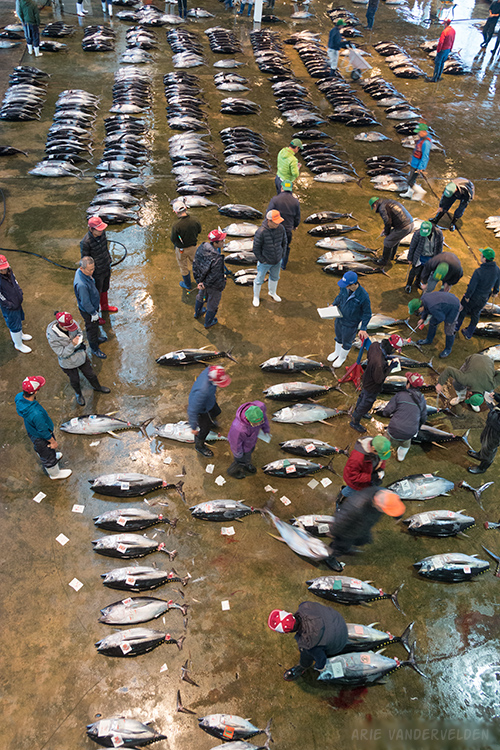
Some buyers began the butchering process on the auction floor by cutting off heads and fins. Others packed their tuna whole in styrofoam boxes and ice.
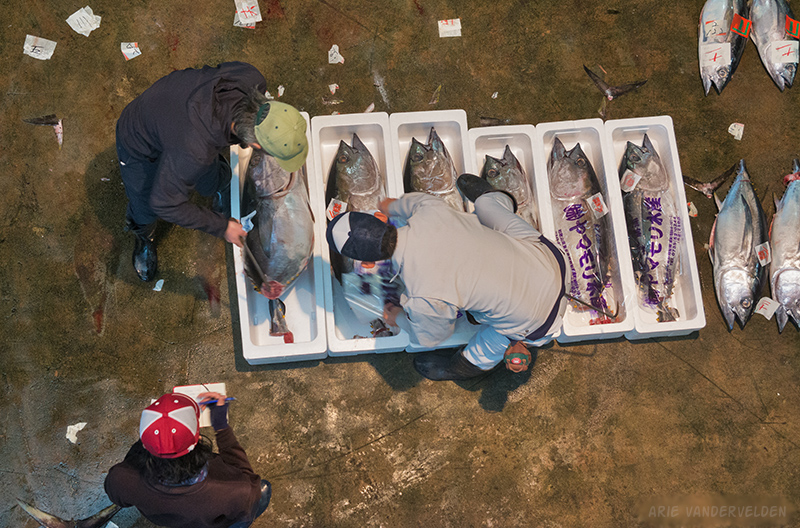
Some local buyers simply loaded the tuna onto the backs of pickup trucks, to be taken to local butchering houses.

At the butcher shops, the tuna are then cut into long fillets, and these are packed in styrofoam and shipped off to sushi chefs. By evening, the tuna will be served as sashimi on the plates of hungry diners.

We stayed three nights in Kii Katsuura, and we had three opportunities to sample tuna at local restaurants.
The first night we followed a recommendation of the hotel owner. She directed us to a tiny little shop on a street corner where an elderly chef and his wife were working behind a counter capable of seating about eight people. We sat down and ordered the sashimi set menu. The kind chef-couple smiled and started to prepare the meals. The gentleman chef brought out his slab of tuna from the fridge and began slicing it with a big knife. Sure enough the tuna was excellent. Diana left her tuna sashimi for last, and the couple beside her were concerned she didn’t like it so they tried to show her how to dip it into the soya sauce. The chef was even asked to bring out a special bottle of soya sauce. We ate every morsel on the plate, and this brought great happiness to the couple beside us and the chefs as well. It was a fun night out.
The second night we asked for a recommendation again, and the hotel owner directed us to a different restaurant. We each ordered a set menu with tuna done five ways: tuna soup, tuna salad, tuna fritters, tuna fried on a hotplate on your table, and the pièce de résistance: tuna sashimi. We had seats at the counter where could watch the chef go about his business as we were eating. At one point he went to the back and came back with a gigantic tuna head. It must have been between 18 and 24 inches in diameter. The chef pulled out a huge knife, sliced the skin off of the top of the head, and then removed the meat: two pieces each as big as a large pork tenderloin. I think he was putting on a bit of a show for us. It was another excellent night out.

The third night we tried a place around the corner that had good reviews on google. It was so-so.
We spent a day walking around Kii Kaatsura. We began by walking around the harbour. There were lots of fishing boats and piles of fishing gear.

We walked north, to the next bay.
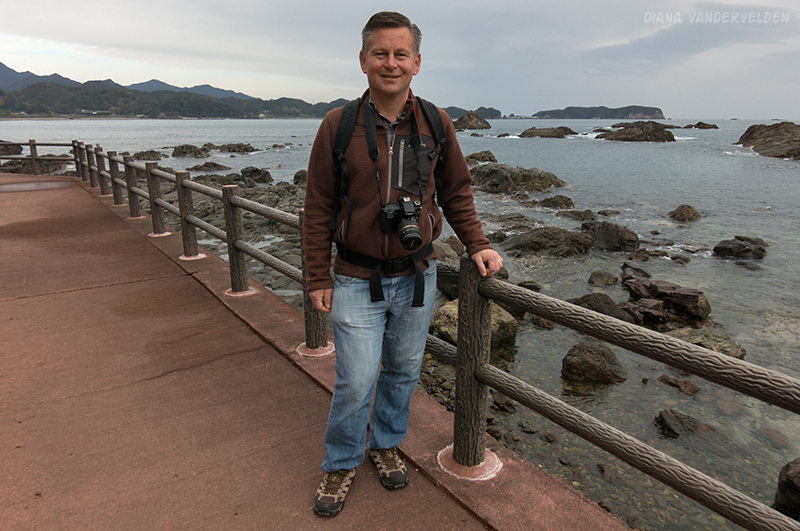
We continued on towards the town of Nachi. Nachi’s beach is a pretty sweep of sand.

We walked into Nachi and bought some bento boxes to go for lunch. There were some picnic tables by the beach, and we had our lunch there.

We walked back the way we came. In Kii-Kaatsura, in the harbour right beside the tuna-auction hall, there was a public footbath. Soaking our feet felt great.
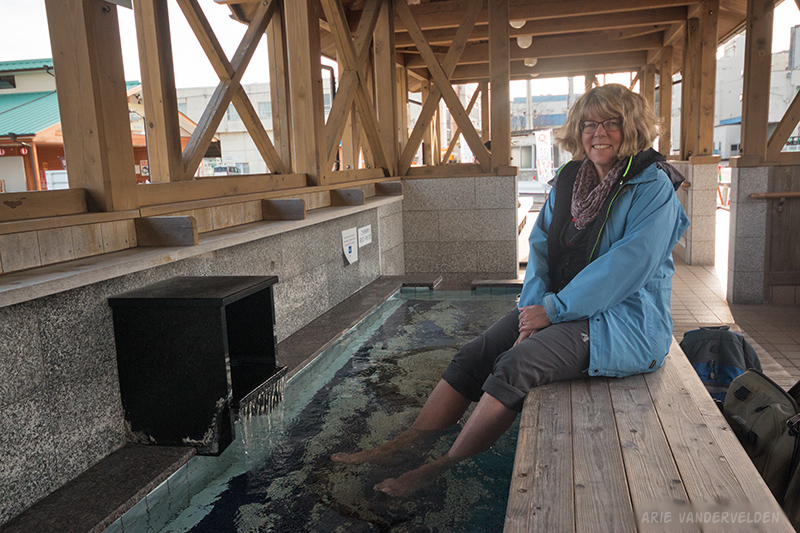
Nachisan
Kii-Kaatsura is close to Nachisan, one of the three grand Shinto shrines on the Kii Peninsula. It’s a few miles inland. We got on a bus at Kii-Kaatsura station and got off at Daimonzaka, about a mile before Nachisan. At Daimonzaka a trail leads into a grove of old-growth cypress forest.
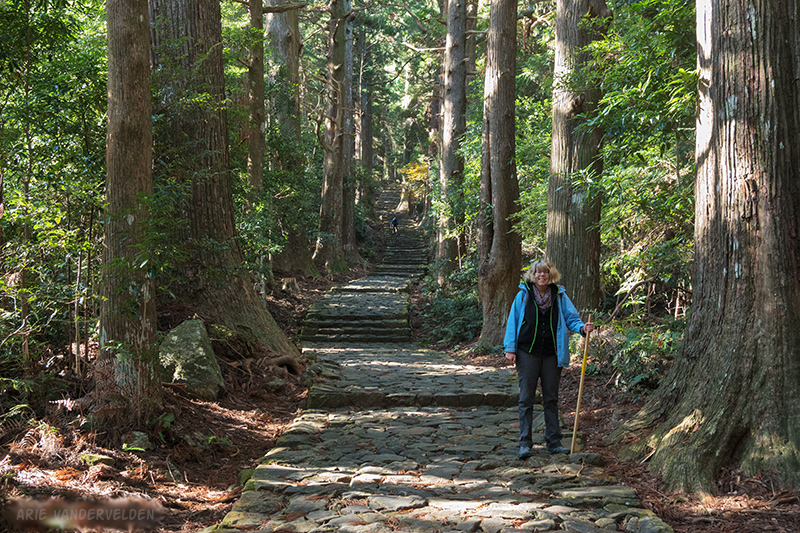
The old-growth forest was quite different than the second-growth cypress forest we’d been hiking earlier in the week. Here, ancient trees with gigantic gnarled trunks stood beside a stone staircase that went upward and upward. We stopped frequently to catch our breath and to take photos.

It was a beautiful sunny day, and bright sunlight came filtering in through the big trees, taking the morning chill off.
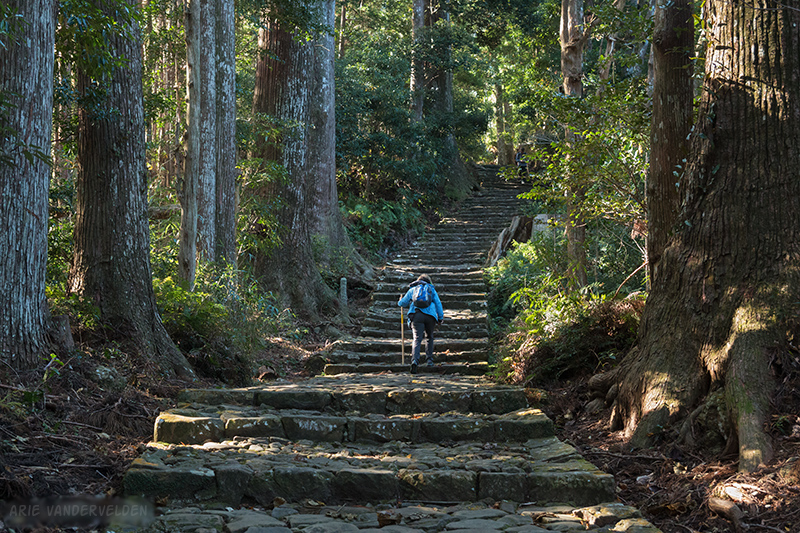
We emerged from the forest at the Nachisan grand shrine.

Unfortunately the main temple was covered in scaffolding. However there was a side-temple dedicated to Yatagarasu, the three-legged crow. Yatagarasu is the symbol of the Kumano Kodo pilgrimage trail. I tossed a 5-yen coin into the offering box, shook the bell, bowed twice, clapped my hands twice, said my prayers, and bowed once more.
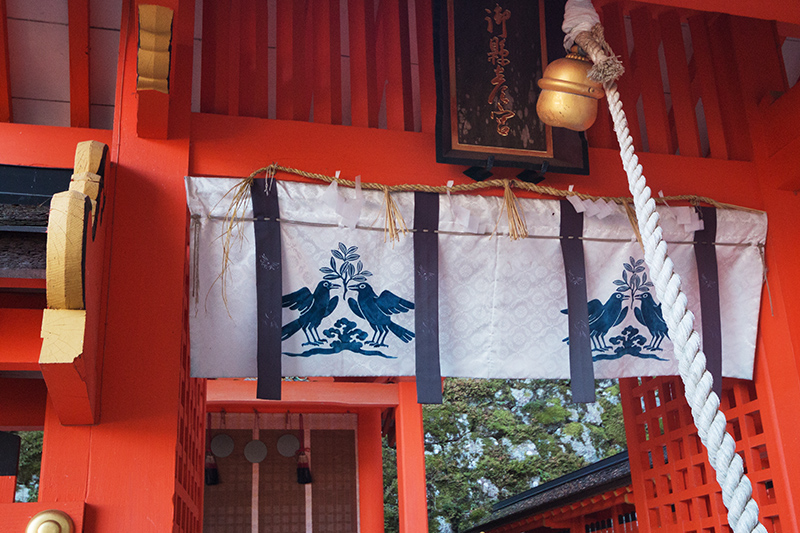
Just down the road from the main temple is a three-tiered pagoda. On approaching it you can see a waterfall in the background. These falls are the highest in Japan. This is a much-photographed, classic view that graces many travel brochures and websites.
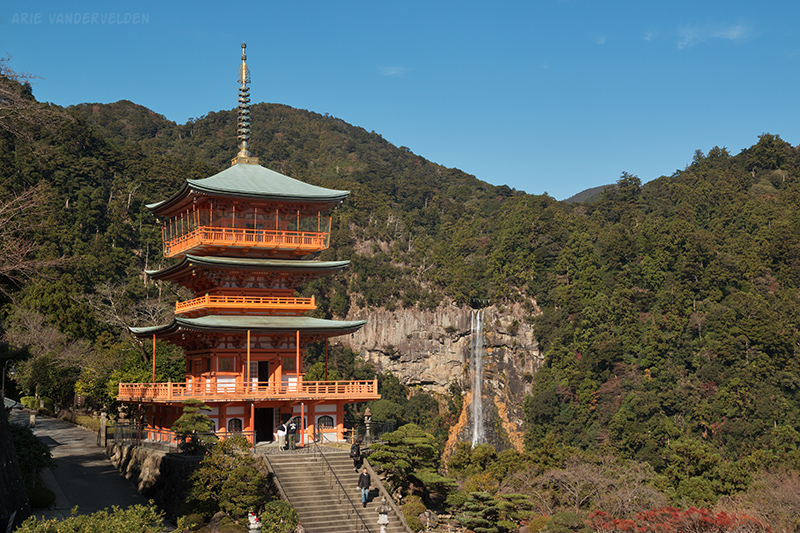
By now it was lunchtime, and we were getting hungry. I suggested looking for a bench to sit so that we could have a little picnic. We had bought buns at a bakery that morning. Lo and behold there were picnic tables right beside the temple.
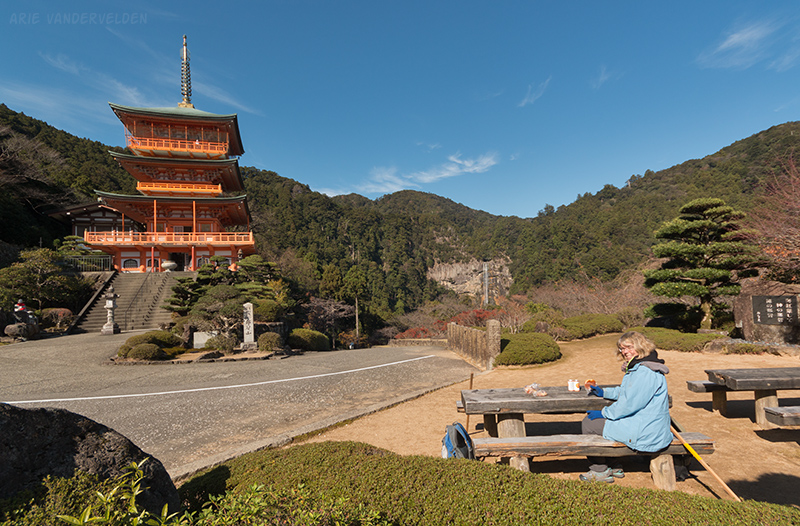
The views from our picnic spot was fantastic.

We soaked up the sunshine and the views. After a while we hiked down to the valley to the base of the falls. It was a touristy spot. We took some pictures and caught a bus back to Kii-Kaatsura.

Koyasan
Our next destination required six hours of travel time: two trains followed by two buses. The first leg of the journey took us around the tip of the Kii peninsula, and there were superb views of the coastline and the sea. I had been looking forward to this train journey and it did not disappoint. On the outskirts of Osaka we changed onto a slow local train heading north into the hills. From there it took two buses to get to Koyasan, a cluster of Buddhist temples in a little hanging valley on top of a mountain. It seemed like a fitting way to conclude our Kumano Kodo pilgrimage.
Koyasan has a history dating back to 800 AD, when a monk named Kobo Daichi decided to found a place for Buddhist learning here. Soon more than a hundred temples were built, and Koyasan became an academy for Buddhist monks, which to some extent it still is today. However today the emphasis seems to be tourism, and the town has quite a commercial tourist-trap feel to it. Most of the temples have built rooms to house guests, and we had booked a temple stay as well.
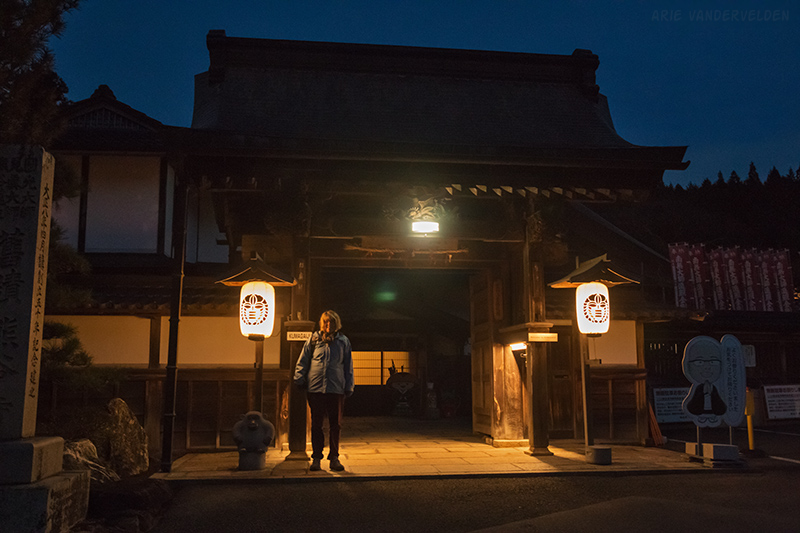
It was cold in Koyasan. The day before we were watching the news, and cold air from Siberia and Manchuria had pushed southeast towards Japan. The northern island of Hokkaido got its first big dump of snow, and elsewhere in Japan the TV showed people bundled up with scarves and winter coats. Koyasan, being at over 800 m elevation, was quite cold too. The temples aren’t heated so they set up space-heaters in an attempt to take the edge off of the cold. We got upgraded to quite a nice room. It was a classic Japanese room with tatami floors and rice-paper screens. Aside from one young Israeli guy we had the whole temple to ourselves.
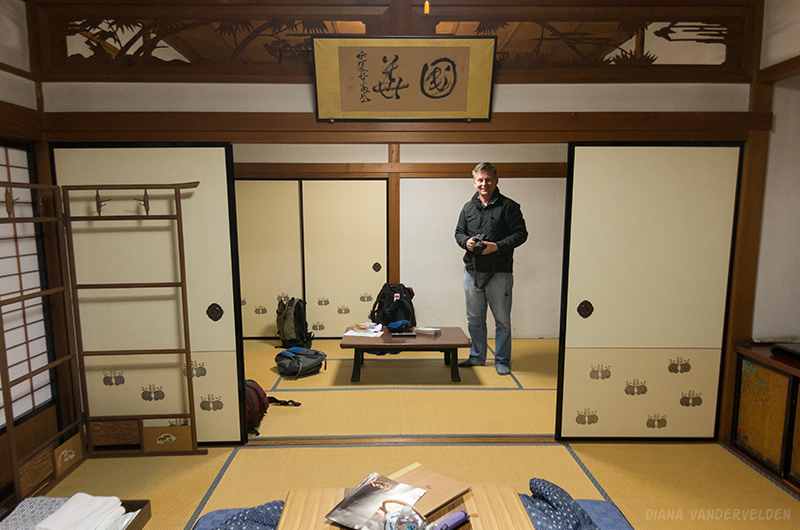
In the evening the monks brought out a special type of vegetarian meal for us with dishes typical of Koyasan.
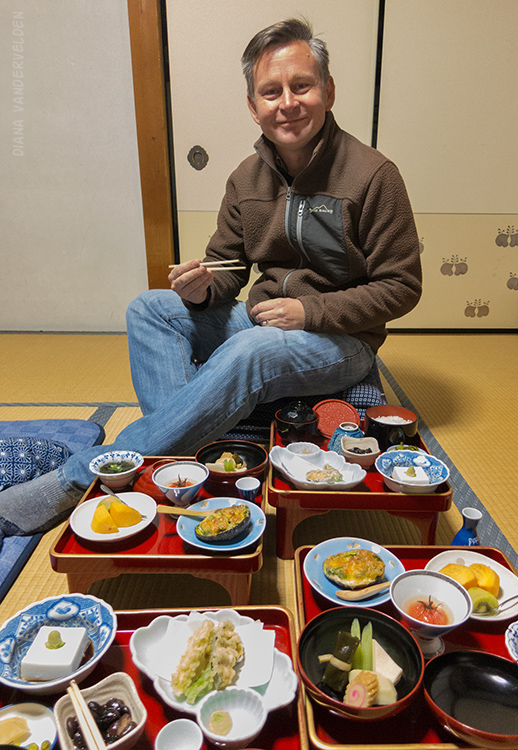
I found some extra futons in the closet so were were able to double up our mattresses, and with the space heater on we actually slept quite well.
We got up at 6:30 am to be able to attend the morning ceremonies put on by the monks. The first bit consisted of a service led by the abbot where he and his novice monks chanted for some time. Diana and I were both blessed by the abbot. The blessing involved bowing and putting some ashes on our foreheads.

We were led to another area where the monks put on a fire ceremony. One monk was making a fire in a bowl, adding pieces of wood and bits of incense as the flames shot up. Another monk furiously beat on a big kettle drum while chanting. The loud drumming and fire had quite a primeval feel to it. I’m sure they put it on to please the tourists, but it is impressive and it is supposed to cleanse the participants of their sins.
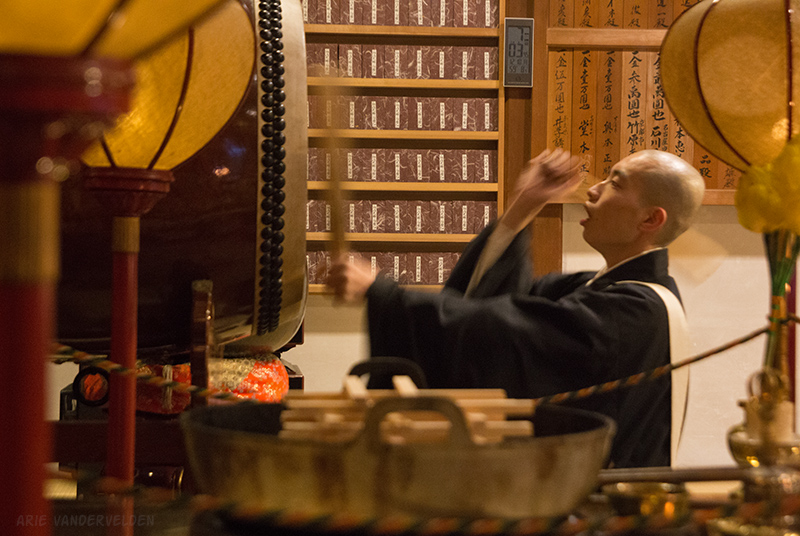
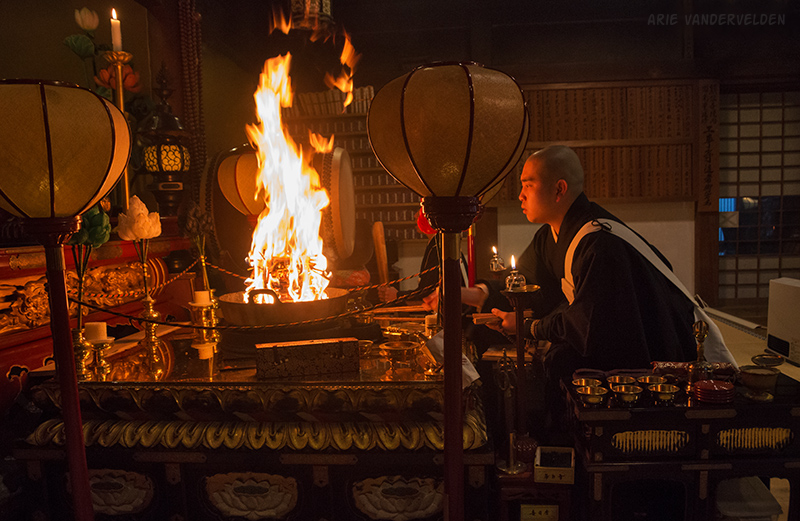
The other thing to see at Koyasan is the Okunoin cemetery. This ancient cemetery is set in a grove of old-growth cypress trees. On the forest floor, centuries-old granite monuments covered with lichens and mosses tilt and teeter, as roots have destabilized the structures from below. It’s an atmospheric place.
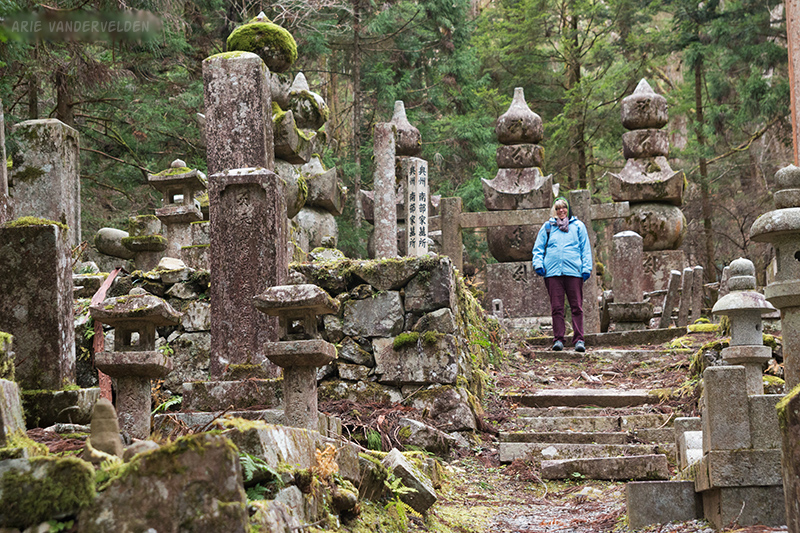
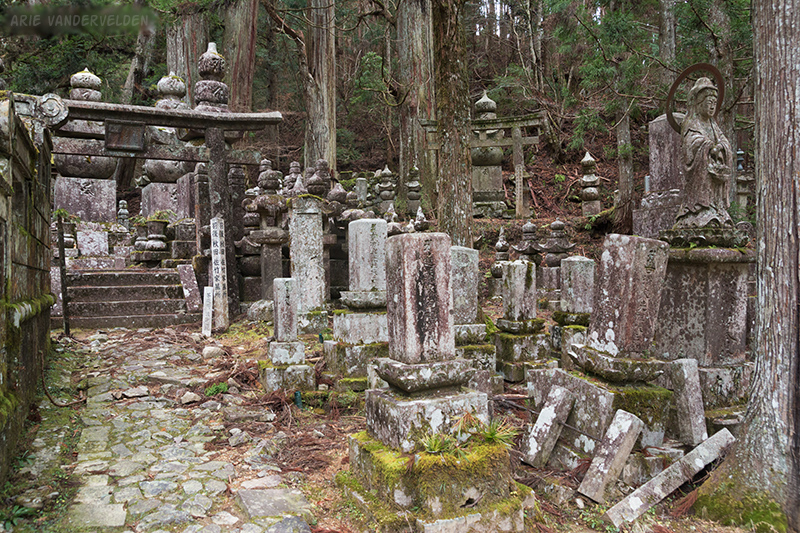
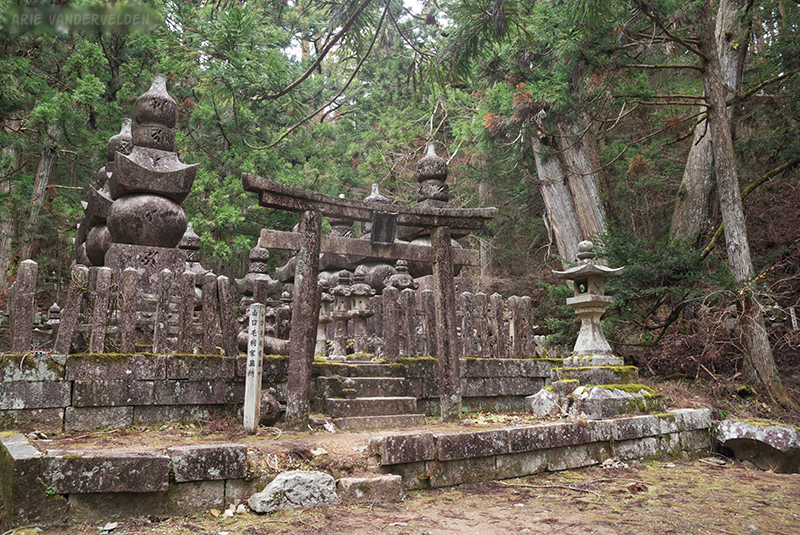
We had initially booked a second night at Koyasan in a different temple, but we cancelled it. Koyasan is expensive, and I imagine most temple experiences are quite similar. Koyasan’s sights and experiences can be done in a day. Instead, we took the train to Wakayama City and spent a night there before flying out to Okinawa. But that’s another story.
Logistics
- In Kii-Kaatsura we stayed at Hotel Charmant. It’s a well-located hotel with a friendly owner. Rooms are simple but comfortable. Highly recommended.
- In Koyasan we stayed at Kumagaiji temple. It is very expensive for what it is, but the other temples in Koyasan are just as expensive. Recommended.
